Original URL: https://www.theregister.com/2014/08/27/raspberry_pi_b_plus_review/
Raspberry Pi B+: PHWOAR, get a load of those pins
More USB ports than your laptop? You'd better believe it...
Posted in Personal Tech, 27th August 2014 09:02 GMT
Review You might think that as a purveyor of a nifty compact computer selling in the millions, you’d consider two years after the debut of your first offering that it was high time you tempted back the buyers with a go-faster, more capacious and shinier model. Heck, Apple and others don’t even wait that long: they upgrade products year in, year out.
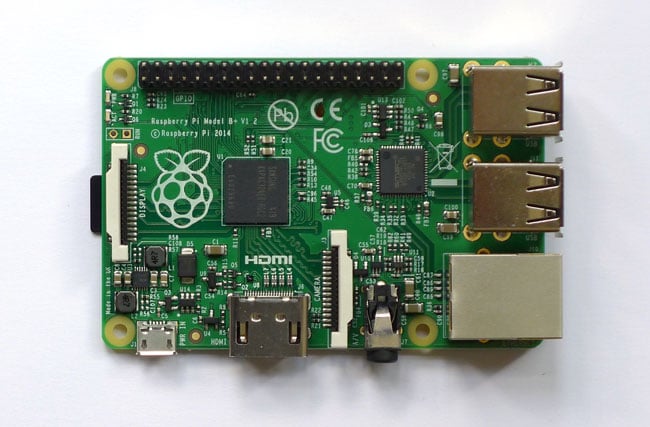
Not so for the Raspberry Pi Foundation, for whom such compressed upgrade cycles are vulgarly short. The very first Raspberry Pi Model B micros slipped out early in 2012, and just over two-and-a-half years later, we have the follow-up, the Model B+ – and it isn’t even an upgrade in the modern sense of the word.
It is a better device, but it has been given an old-style upgrade of the kind made back when the word meant a small incremental improvement and didn’t refer to an almost entirely new product that just happens to sport the same name as its predecessor.
Today, "upgrade" means chuck out your current product and buy a brand new one because it’s more shiny. Because the Pi Model B+ is still only 30 quid, an upgrade *de nos jours* isn’t a big deal, but don’t assume that you’ll be getting a completely new piece of hardware.
The B+ is simply a redesigned version of the original – the Foundation calls it an “evolution” of the original Pi, and dubs it "Revision 3" of the B – rather than an updated version.
So what has changed? From a compute perspective, not a jot. The B+ runs no more quickly and has no extra memory than the B has. Pi eaters looking for a device with more for them to get their teeth into will be disappointed.
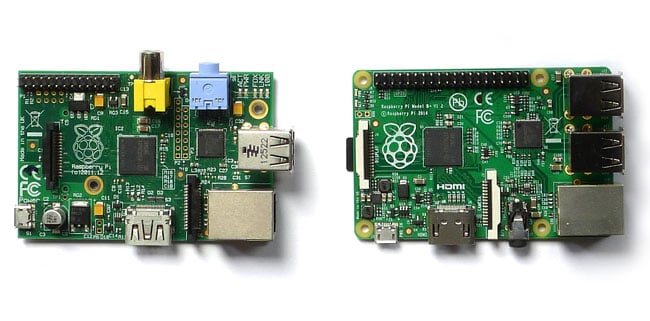
Spot the differences: The B and the B+ (left and right)
Instead, the Foundation has taken the opportunity to give the B a makeover in order to address some of the board layout issues and component gripes that users had about the original. It’s as if the B were the beta and the B+ the golden master.
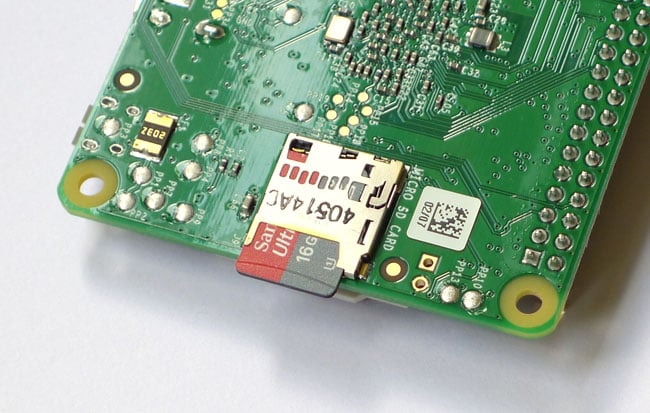
Spring-loaded Micro SD slot? Don't mind if we do
Gone, then, is the flaky, latch-less SD card reader, replaced by a Micro SD slot that is spring-loaded to prevent the inadvertent card removals that fritzed so many Model A and Model B users’ installed operating systems.
I had already converted to Micro SD for my Pi storage, using a three-quarter size SD adaptor, so I was able to take the storage out of my B and pop it straight into the B+ and have it boot without any bother. That’s a sign that, from the perspective of the software, nothing has changed.
Indeed, that’s the point: changing some of the major components would have inevitably required users to start from scratch with a fresh install. Of course, folk who haven’t already migrated to Micro SD will have to anyway. Or not, since the benefits of the B+ are limited.
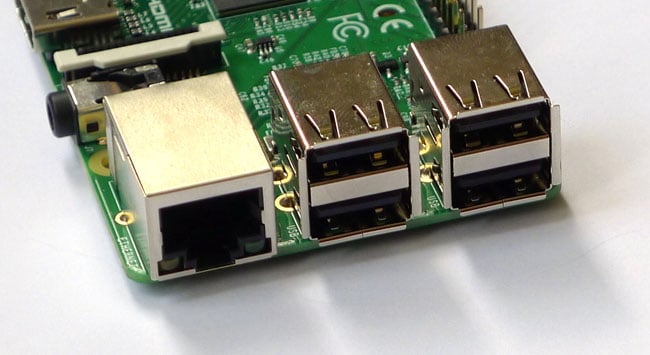
The B+ sports FOUR USB ports
The Model A Pi’s single USB port was next to useless; the B had two, which was useful but still not enough to connect a mouse, keyboard and Something Else unless you had a USB hub. The B+ has four USB ports, more than my laptop, though my laptop has Wi-Fi, Bluetooth, keyboard and mouse built in. None of these are integrated into the Pi, making USB ports a much-treasured resource. The ports aren’t quite flush with the edge of the board, but they don’t poke out as far as they did on the B and they align with each other and the Ethernet port.
The B+ sports improved power regulation circuitry: out goes the old wasteful linear regulator, in comes an much more efficient switching regulator. That helps drive the extra USB ports, but there are still limits. I have an old 2.5-inch laptop hard drive in a bus-powered caddy, but the B+ couldn’t provide it with sufficient power – and I use a 5V, 2A USB AC adaptor. Even removing the keyboard, wireless mouse dongle and a USB stick didn’t help, ditto shifting to a 5V, 2.4A adaptor, so there may well be some instances where you’ll need extra juice.
So if you’re thinking about replacing your Model A or B, make sure you don’t sell your USB hub too.
That said, smaller external hard drives ran without a problem. So much depends on precisely what you want to hook up to the Pi: drives, webcams, wireless network adaptors, whatever. For me, the important thing is having enough ports for day-to-day usage – ie, keyboard, mouse and occasional USB stick – so I pack away the hub. If you do use a hub, the Foundation has eliminated back-powering, an issue that bothered some A and B users.
Gone are the separate RCA composite-video and 3.5mm audio ports, both replaced by a single 3.5mm port that handles both sound and vision. Better circuitry – a dedicated power supply, essentially – means there’s less noise to interfere with the audio signal. It has been relocated to the other side of the board next to the HDMI jack, which now supports bus-powered VGA adaptors, says the Foundation. The board’s display and camera connectors are still present.
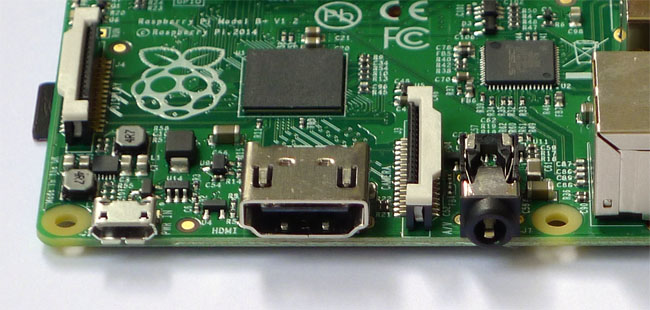
Bringing the AV ports together would have made sense even if the Foundation hadn’t chosen to expand the B+’s GPIO pinout, but it has done just that, increasing the count from 26 pins to 40.
Are you compatible?
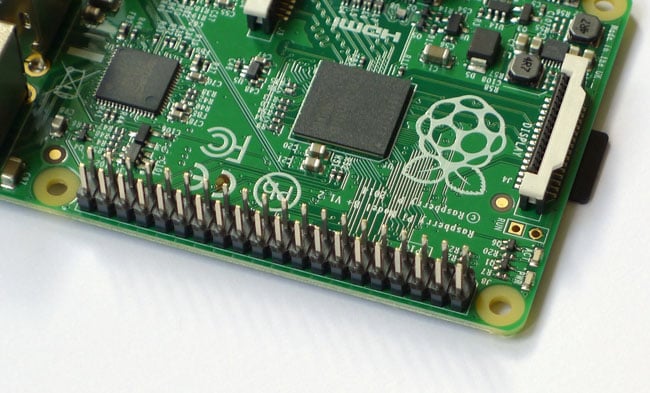
It’s a bit of a cheat: the B had the extra GPIO too, but they were routed to other parts of the board and left unattached to header pins. They’ve now been corralled to extend the original two rows of GPIO pins, which retain their numbering and functionality. The upshot is that the extra pins won’t prevent existing add-ons being used: just slot them onto the first 26 pins on the board and use them as before.
What will prevent old kit being used, however, is the extra USB ports. A fair few add-on boards were cut to drop in alongside the Pi’s connectors, allowing them to be pushed down as close to the Pi as possible.
The layout changes will mess many of these up – my PiFace, for instance – requiring either the use of a GPIO extension cable, a 26-pin GPIO raiser, or the purchase of a new, updated add-on. Smaller boards are generally fine – my PyGlow continues to operate as a colourful system monitor for the Pi in headless mode. Larger boards with depth-extended female connectors – such as the Pi-Lite – should still work too.
For the same reason, existing Pi cases will not work with the new model. Here, the decision to move the micro USB power jack from the back of the board to the side (next to the HDMI port) will hinder attempts to hack cases to fit the new board, though you could probably cut one end away to ensure all the new USB ports are exposed. You could even drill extra holes in the base to line up with the B+’s four mounting points, evenly arranged at edges of the board.
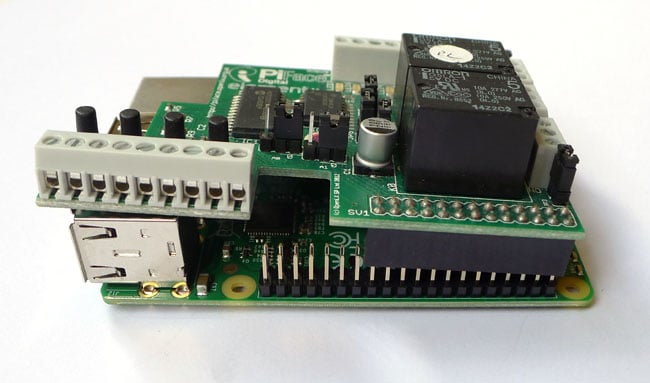
Some old boards don't fit...
New cases will be less bright affairs: the Pi’s five status LEDs have been reduced to two: power and disk activity. The board’s Ethernet jack has two built-in LEDs to replace the three network-centric indicators on the old board.
There are broader improvements to the GPIO that make all this case business irrelevant. Two of the pins are intended for I2C EEPROM connectivity, but the Foundation will be using them for add-on board interrogation, part of a new spec it’s calling HAT (Hardware Attached on Top).
It’s the Pi answer to Arduino’s shield system, and defines a standard schema for implementing Pi-friendly cards. The specification includes auto-configuration and automatic driver setup, and aligned mounting holes to boards can be bolted to the host Pi. The Foundation says HAT is optional, but such initiatives have a habit of becoming de facto standards, so adopting the B+ might well seem the best way to future-proof your Pi rig.
It also explains why so many of the emerging B+ cases are considerably taller than old ones: it's all the better to accommodate HATs.

The Reg Verdict
The B+ is unquestionably a better Pi than its predecessor. It’ll make your battery-powered projects run further, its solid-state storage card is held more securely and its extra USB ports mean you can probably do without a USB hub at long last. Yet it’s fully compatible with your existing setup. Only if you need to convert from SD or Mini SD to Micro SD will you have any bother there.
For me, 30 quid isn’t a barrier, so I’ll be availing myself of a B+ to replace the B I currently mess around with. The extra USB ports and support for a new generation of add-on cards make it a no-brainer. Yes, I certainly tip my HAT to the new Pi B+. ®